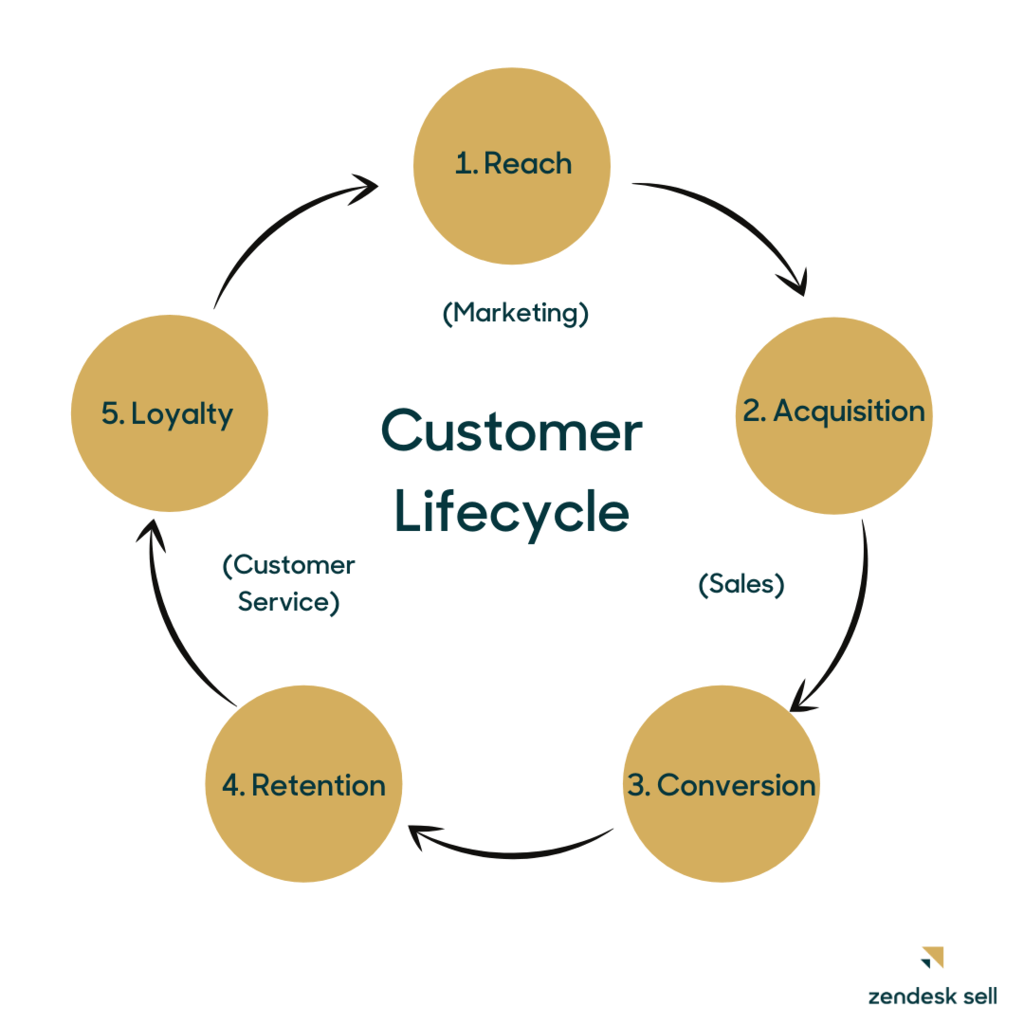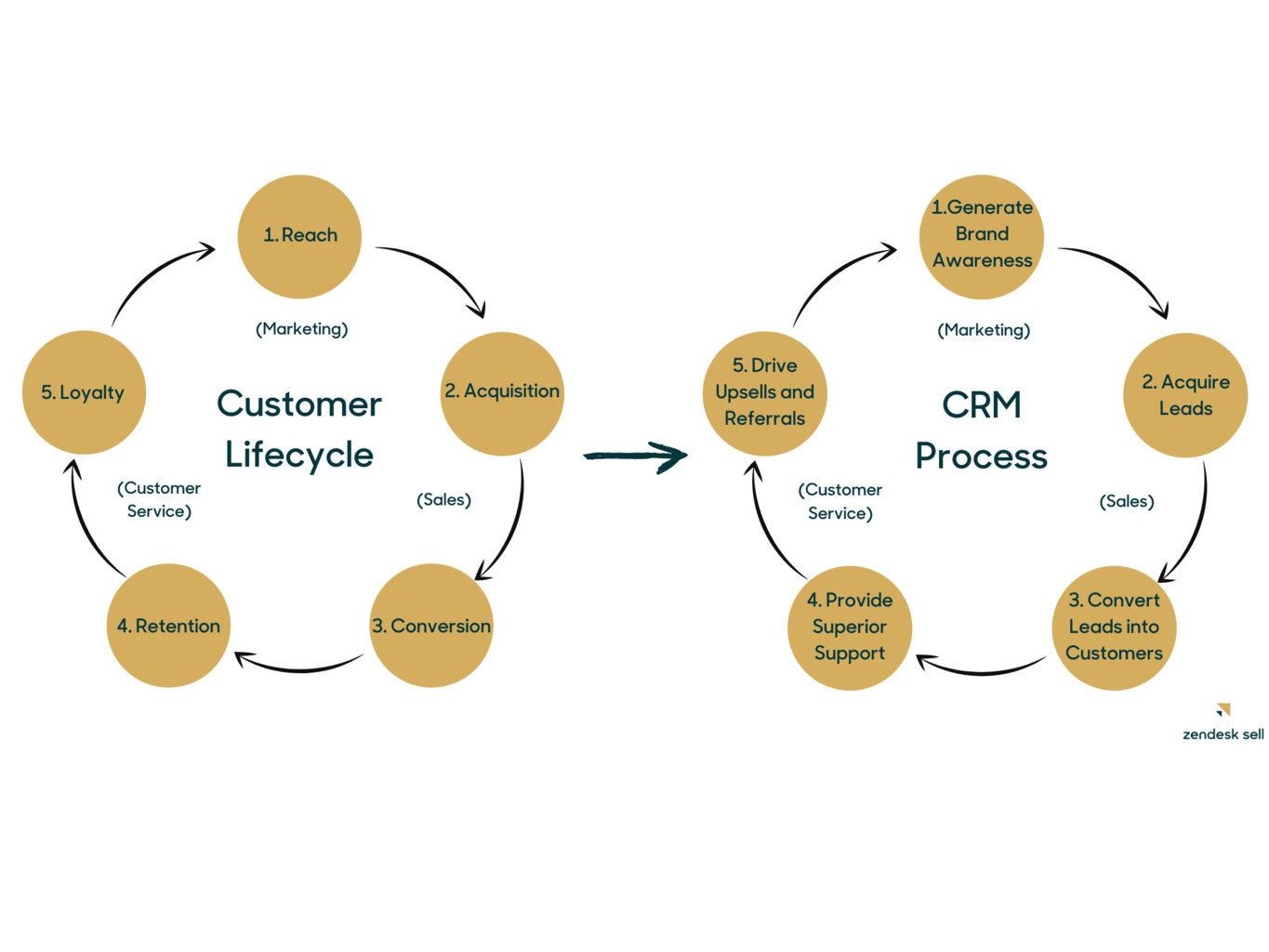Best practices • 8 min read
What is the CRM process? 5 key steps
The CRM process is a strategy for keeping every customer interaction personalised and meaningful that consists of five main steps.
By Liz Coffman
Last updated May 16, 2022
Consumers today expect a personalised customer experience catering to them as individuals. In order to meet these expectations, you have to understand what your audience wants and needs, and you must understand how to deliver on these requirements better than your competition.
The CRM process helps your organisation achieve these goals.
What is the CRM process?
The CRM process is a strategy for keeping every customer interaction personalised and meaningful that consists of five main steps. A customer relationship management system (CRM system) provides the data and functionalities your team needs to execute this strategy—and ultimately turn leads into customers.
What is the CRM process?
To understand the steps in the CRM process, you have to understand the customer life cycle. It is one of the first concepts that you learn as a sales rep to understand how a person becomes a loyal customer.
The CRM cycle involves marketing, customer service and sales activities. It starts with outreach and customer acquisition and ideally leads to customer loyalty.
There are five key stages in the CRM cycle:
Reaching a potential customer
Customer acquisition
Conversion
Customer retention
Customer loyalty
 The CRM process is that concept in action. It is the tangible steps that an organisation must take to help drive consumers through the cycle of learning about your brand and ultimately becoming loyal (and repeat) customers.
The CRM process is that concept in action. It is the tangible steps that an organisation must take to help drive consumers through the cycle of learning about your brand and ultimately becoming loyal (and repeat) customers.

According to the customer life cycle, we know that the first step in the CRM process is maximising reach with leads. In practice, reach is using your CRM to generate brand awareness via targeted marketing campaigns.
Every stage in the customer life cycle corresponds to an actionable step in the CRM process. The key is knowing what those steps are and how to execute them.
What are the steps in the CRM process?
The five steps in the CRM process are a collaborative effort between Marketing, Sales and Support departments. To help you understand how each team works together, we will go through how each step works in practice. We will cover not only how each part of the process can be completed with a CRM tool but also who is responsible for each step.
1. Generate brand awareness
The first step in acquiring new customers is to introduce them to your business. The Marketing team generally takes on this task using a number of measures:
- 1. Learning about your target audience: Marketers will conduct research to identify their audience’s target demographics, interests, preferred channels of communication, what messaging they respond most to and what they care about.
2. Segmenting your target audience: Audience personas are created to segment a brand’s target audience into similar groups based on similar interests or demographics. This helps marketers identify which types of people are most likely to become customers and who their campaigns should target.
3. Creating marketing campaigns that speak to the target demographics: A/B tests and marketing automation can be used to identify what works and what does not, to create unique campaigns for unique customer segments such as on social media or email and to create strategies for lead acquisition.
When it comes to completing these steps, CRM software contains a wealth of information. The tool can show patterns in past leads and customers to give marketing teams a clear picture of their target audience. Beyond understanding similarities in demographics, marketers can also analyse sales notes in their CRM technology to understand what led to conversions in the past. By understanding what resonated with leads, marketers are better equipped to create effective campaigns.
2. Acquire leads
Introducing your brand to a potential customer is just the beginning of the CRM process. From there, you have to encourage them to learn more about your business and engage with it.
Depending on how your company is structured, this lead acquisition step could be a marketing or sales team responsibility — or both. Your marketing team, for example, might encourage website visitors to share their email with a newsletter signup CTA or a social media giveaway. Sales, on the other hand, could use their CRM system to set up live chat on your site. With this feature, your team can proactively reach out to potential customers who land on your website.
If your CRM technology comes equipped with a lead enrichment tool, like Reach, lead acquisition is unbelievably simple. All the tool needs is a lead’s email address to instantly reveal detailed information about the person. With customer data, you can personalise your outreach with the lead to start the relationship off on the right note. Not to mention, you can save tons of time by not needing to research leads yourself.
3. Convert leads into customers
You have successfully engaged with your leads and they are interested. Now it is time to turn those leads into customers.
To do so, sales reps must first be skilled at identifying how interested leads are and, specifically, whether they are interested enough to make a purchase. A CRM is very helpful here. The historical data from past successful sales can be used to identify lead-qualification criteria. These criteria can be added as “attributes” to your CRM’s lead-scoring tool to help reps identify opportunities with the highest probability of a sale.
If leads do seem likely to make a purchase, reps must then be able to nurture them further and build their trust enough to convert. One way to do this is for reps to send leads case studies, white papers and other resources that may sway their decision.* *
Reps should also use their CRM platform to set reminders and tasks to follow up with interested leads. After all, studies have shown that “63% of consumers need to hear a company’s claim 3-5 times before they actually believe it.” Use your CRM’s dashboard to help you remember to follow up to ensure that no opportunities are missed.
4. Provide superior customer service
You have successfully converted your lead into a customer. Great! But the CRM process does not end when a customer converts. In order to grow as a company, you need to retain customers. How do you keep the customer coming back? With excellent service from Support.
According to Zendesk’s 2020 Customer Experience Trends Report, customer service is the biggest factor that determines a consumer’s loyalty to a brand. Conversely, poor customer service can cost you customers and negatively impact your reputation. Support teams must be able to deliver superior support whenever, wherever, and however their customers expect it.
Forty-nine percent of customers say being able to resolve their issue quickly is the most important aspect of a good customer service experience. With CRM software, support agents can easily access the historical customer information they need to resolve a ticket quickly.
Fifty-seven percent of customers expect to have a choice of channels when reaching out to customer support. CRM features allow support agents to not only provide omnichannel support but also manage those conversations in a single, unified view.
With the right CRM, your agents have the customer information and resources they need to resolve a customer’s issues quickly and effortlessly. This allows for a stress-free and efficient experience for both the customer and the support agent.
5. Drive upsells
When we think of a returning customer, we imagine a shopper continually coming back to the same business to buy the products they know and love. But there is another key way existing customers provide value — by upgrading to more expensive products.
How do you convince customers to switch products? Personalised recommendations via email are a great place to start. You can use your CRM to organize customers into smart lists based on similar purchase histories. You can then create custom email templates that send relevant product releases to entire lists of customers at once. This way, you can be sure the promotional deals or releases you send are reaching the people most likely to buy them.
If your business is service-based, you may find upsell opportunities through check-in calls. Set reminders in your CRM to regularly reach out to repeat customers to ask how they are doing and whether there is any way you could improve your service. Their needs may very well have changed since the last time you spoke, and they may be ready for an upsell.
With a CRM process, the customer lifecycle no longer feels abstract. The right CRM enables you to create a deliberate, personalised experience that naturally drives leads through your sales pipeline.
Create a better customer experience with the CRM process
In order to stand out from the competition, you can not go wrong by delivering a personalised, meaningful customer experience — one that makes your customers feel like no matter what, you have got them.
The five-step CRM strategy for delivering this experience throughout every stage in the customer journey. And with all of the customer data you need, a CRM tool makes it possible to execute that process. You can even try a free CRM to see just how impactful it can be.
